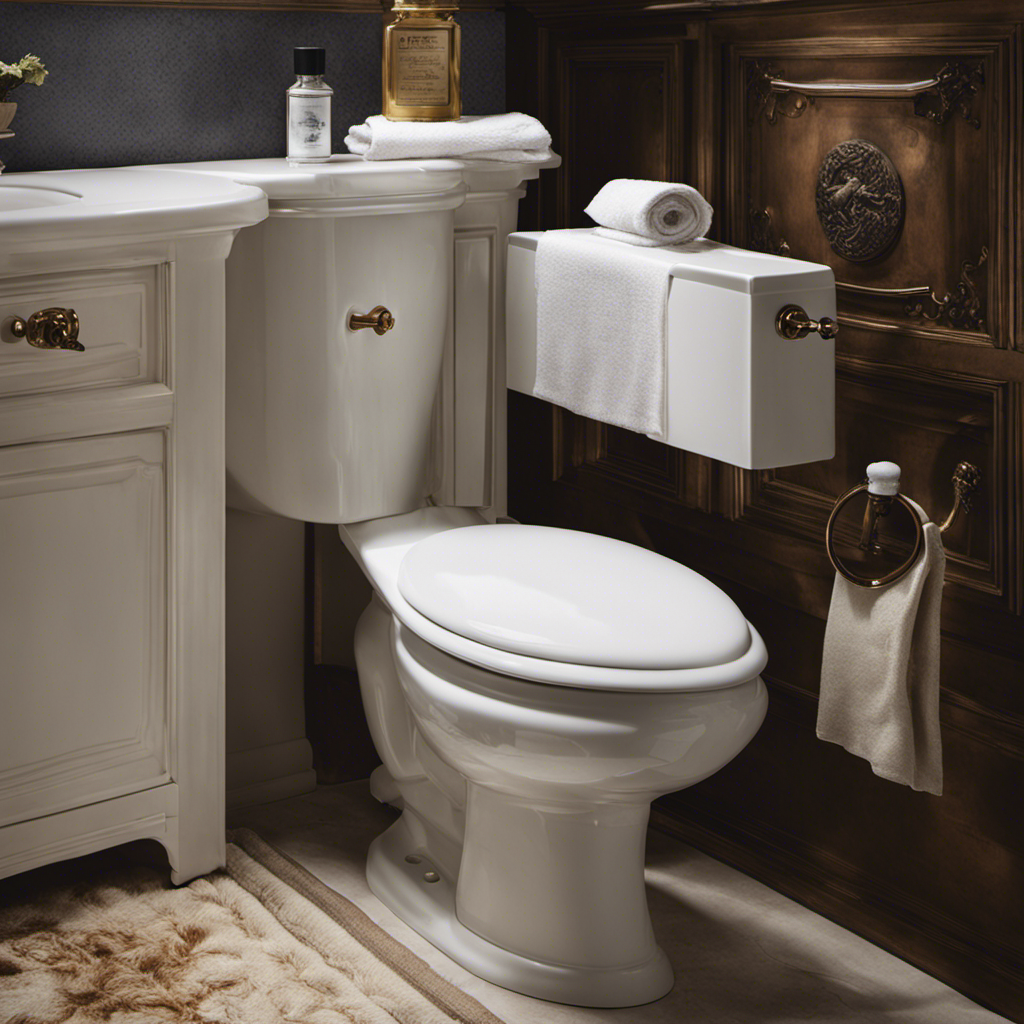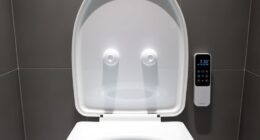I’ve been there – standing in a bathroom, desperately hoping the toilet drain would magically unclog itself. But fear not, because I’m here to share my tried and tested method for unclogging a toilet drain.
In this step-by-step guide, I’ll walk you through the common causes of toilet clogs, the essential tools you’ll need, and the most effective way to use a plunger.
Don’t worry, I’ve got you covered. Let’s get started and banish those pesky clogs for good.
Key Takeaways
- Water rising to the brim
- Slow drainage
- Gurgling sound when flushing
- Troubleshooting involves a step-by-step approach
Understanding the Common Causes of Toilet Clogs
Understanding the common causes of toilet clogs can help you prevent future issues.
There are several common signs that indicate a toilet clog, such as water rising to the brim, slow drainage, or a gurgling sound when flushing.
Troubleshooting these clogs involves a step-by-step approach.
First, you can try using a plunger to dislodge the clog. Make sure to create a tight seal around the drain and plunge vigorously.
If that doesn’t work, you can try using a toilet auger or a plumbing snake. Insert the auger into the drain and rotate it to break up the clog.
Another troubleshooting method is using a mixture of baking soda and vinegar, which can help dissolve the clog.
Understanding these common causes and troubleshooting methods can save you from the hassle of a clogged toilet.
Essential Tools and Supplies for Unclogging a Toilet Drain
To successfully tackle the current task, you’ll need a few key tools and supplies. One of the most effective tools for unclogging a toilet drain is a toilet auger, also known as a drain snake. This tool is specifically designed to navigate through the twists and turns of the toilet’s drain pipe and break up any clogs.
In addition to a toilet auger, you’ll also need some basic supplies such as rubber gloves, a bucket, and a plunger. The rubber gloves will protect your hands from any potential mess, while the bucket will come in handy for collecting any water that may overflow during the unclogging process. Lastly, a plunger can be used to help dislodge any smaller clogs before using the toilet auger.
Here is a table to summarize the essential tools and supplies needed for unclogging a toilet drain:
| Tool/Supply | Purpose |
|---|---|
| Toilet Auger/Drain Snake | Breaks up clogs in the toilet drain pipe |
| Rubber Gloves | Protects your hands from mess |
| Bucket | Collects overflow water during unclogging |
| Plunger | Helps dislodge smaller clogs before using the toilet auger |
Step-by-Step Guide to Using a Plunger Effectively
Start by firmly positioning the plunger over the clogged area and applying downward pressure. Make sure the plunger is completely covering the drain hole to create a tight seal.
Next, rapidly push and pull the plunger up and down, creating suction and pressure to dislodge the clog. Repeat this motion several times, being careful not to break the seal.
If the clog doesn’t clear after a few attempts, try using a toilet auger. Insert the auger into the drain and rotate it clockwise to break up the blockage. Slowly retract the auger while continuing to rotate it to remove the clog.
Remember to clean the plunger and auger after use to prevent the spread of bacteria. If these methods don’t work, it’s time to explore alternative methods to unclog a toilet drain.
Exploring Alternative Methods to Unclog a Toilet Drain
If none of those methods work, it’s worth trying some alternative ways to clear a clogged toilet.
One option is to use chemical solutions specifically designed to break down clogs. These can be found at most hardware or grocery stores. Follow the instructions on the label, pour the recommended amount into the toilet bowl, and let it sit for the specified time. Then, flush the toilet to see if the clog has been cleared.
Another alternative is to use natural remedies. One popular method is to combine baking soda and vinegar. Start by pouring half a cup of baking soda into the toilet bowl, followed by one cup of vinegar. Let the mixture sit for a few minutes, and then flush the toilet.
Hopefully, one of these alternative methods will help you unclog your toilet.
Preventive Measures to Avoid Future Toilet Drain Clogs
One effective way to prevent future clogs is by regularly maintaining your toilet. By implementing some simple DIY toilet drain cleaning techniques, you can keep your toilet functioning smoothly and avoid the hassle of dealing with clogs.
Here are three important steps to include in your toilet drain maintenance routine:
-
Check the water flow: Regularly inspect the water flow in your toilet by flushing it and ensuring that the water is draining quickly and smoothly. If you notice any slow drainage or backups, it’s a sign that there may be a blockage forming.
-
Use a toilet auger: Invest in a toilet auger, also known as a toilet snake, which is a handy tool to remove any clogs that may be forming. Insert the auger into the toilet drain and rotate it to break up and remove any obstructions.
-
Practice good flushing habits: Educate your family members on flushing habits that can prevent clogs. Remind them not to flush excessive toilet paper or non-flushable items down the toilet.
Conclusion
In conclusion, unclogging a toilet drain may seem like a daunting task, but with the right tools and techniques, it can be easily accomplished.
Just like clearing a blocked drain, sometimes in life we encounter obstacles that seem insurmountable. But just as a plunger can push through the toughest clogs, we too have the power to overcome challenges.
So next time you face a clogged toilet or any other hurdle, remember that with determination and perseverance, you can unclog any drain life throws your way.










